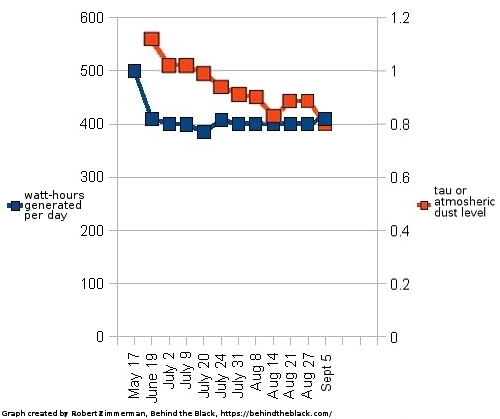September 13, 2022 Quick space links
Courtesy of stringer Jay.
- Sierra Space tests to failure a one-third size prototype of its inflatable LIFE space station module
The goal was to see how well the inflatable module could hold its atmosphere. The safety requirement is 182.2 pounds per square inch (psi). The prototype burst at 192 psi. For context, the atmosphere is about 14 psi. You can watch a video of the test here.
- China’s astronauts, their mission 100 days old, prepare for 2nd spacewalk
- Engines for new Long March 5G rocket have accumulated 10,000 seconds of hot fire tests
This appears to be different than the Long March 5D rocket, both of which are upgrades of the Long March 5. Though the tweets at the link suggest the 5D will be reusable, it remains unclear as yet whether either rocket’s core stage will be capable of a controlled re-entry, rather than falling to Earth as uncontrolled and dangerous space junk.
- DART remains on course for a September 26, 2022 planned asteroid impact
The tweet from Rocket Lab provides a link to the live stream, which will not go active for another 12 days.
- OneWeb and Arianespace sign new launch deal following Russian confiscation of satellites
Few specifics were released, except for the hint that the two companies are discussing the possible use of the Ariane 6 for future satellite launches. The release also noted that Arianespace will provide some support for two OneWeb launches that NSIL, the commercial space agency of India, is doing.
Courtesy of stringer Jay.
- Sierra Space tests to failure a one-third size prototype of its inflatable LIFE space station module
- China’s astronauts, their mission 100 days old, prepare for 2nd spacewalk
- Engines for new Long March 5G rocket have accumulated 10,000 seconds of hot fire tests
- DART remains on course for a September 26, 2022 planned asteroid impact
- OneWeb and Arianespace sign new launch deal following Russian confiscation of satellites
The goal was to see how well the inflatable module could hold its atmosphere. The safety requirement is 182.2 pounds per square inch (psi). The prototype burst at 192 psi. For context, the atmosphere is about 14 psi. You can watch a video of the test here.
This appears to be different than the Long March 5D rocket, both of which are upgrades of the Long March 5. Though the tweets at the link suggest the 5D will be reusable, it remains unclear as yet whether either rocket’s core stage will be capable of a controlled re-entry, rather than falling to Earth as uncontrolled and dangerous space junk.
The tweet from Rocket Lab provides a link to the live stream, which will not go active for another 12 days.
Few specifics were released, except for the hint that the two companies are discussing the possible use of the Ariane 6 for future satellite launches. The release also noted that Arianespace will provide some support for two OneWeb launches that NSIL, the commercial space agency of India, is doing.













